Golf arrived in Connacht in the 19th century via the military and freemasons. Lieutenant-Colonel James Campbell is typically credited with establishing the first golf club in the province at Rosses Point, Co. Sligo, in 1894.
Golf’s arrival in Sligo
It is widely believed that the servicemen of the Sligo Artillery Militia brought golf to Sligo in the 19th century. This is hardly surprising given that British regiments, and especially Scottish soldiers, are credited with establishing the sport in Ireland. However, some believe that the strong masonic association with golf enabled its rapid spread throughout the country. The reality probably lies somewhere in the middle as freemasons often occupied positions in the upper ranks of the army.
Sligo militia had a camp at Bomore on Rosses Point Peninsula, just 7km west of Sligo town, where they trained with huge battery guns. It was here, it is said, that they first dug some rudimentary putting holes in the vicinity of their camp. Golf grew quickly in popularity among the soldiers.
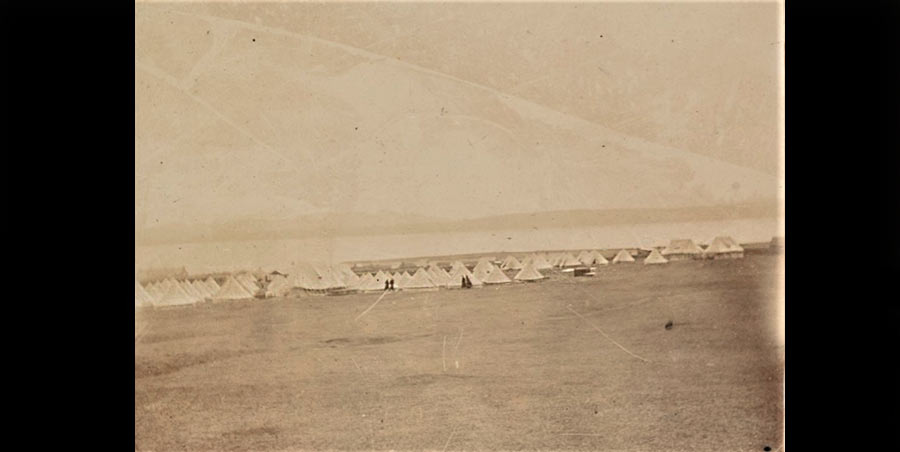
>>> YOU MIGHT ALSO LIKE: Excavation of Sligo’s Green Fort yields over 1,000 finds from 17th-century bastioned military fort
Rosses Point golf links
The late 19th century saw the codification of the sport in Ireland. The earliest golf clubs were founded in the 1880s, mostly around Dublin and in Ulster. In the decade that followed, clubs sprung up throughout Ireland. In 1894 Sligoman Lieutenant-Colonel James Campbell decided to formally structure this popular recreational activity locally by establishing the “County Sligo Golf Club”, apparently the first club in Connacht.
A D V E R T I S E M E N T
Campbell appealed to local landlord Sir Henry Middleton to lease a parcel of land known as the “Greenlands” on Rosses Point Peninsula, for use as a golf links. As an army officer with the local militia, Campbell was very familiar with this area. The peninsula had also long accommodated a racecourse and Campbell was part of the committee selected to organize racing events there. The Greenlands was an idyllic and convenient location for a golf links. The headland overlooked Sligo Bay and it was overlooked by Benbulbin, while the nearby village – also named Rosses Point – had already developed into an elite seaside resort and was in easy reach of Sligo town.

Only a few months previous, the locals of Rosses Point had found themselves in dispute with Henry Middleton. In July 1894 it was reported that Benjamin Murrow, Middleton’s agent, had erected a gate and fence at the entrance to the Greenlands and had posted the following notice: “No games will be allowed to be played, nor trespasses by horses, vehicles or bicycles permitted on the Greenlands without permission”. This obstruction to an established right-of-way caused profound anger locally. It was subsequently reported that the trespassing notice had been thrown into the sea and arrangements were being made to pull down the gate in defiance of the landlord.

The first meeting for the formation of the County Sligo Golf Club was held in Sligo courthouse on 19 October 1894 and was chaired by Liet-Col. James Campbell. A board of trustees and committee council were established comprising: James Campbell, Harper Campbell Perry and Arthur Jackson. Evidently, some loosely formed local club was already in existence prior to this meeting as a notice in the Sligo Champion the following day stated: “it was resolved that original members should be enrolled until 1st November, 1894”.

The services of George Combe were soon employed to lay out nine holes on the leased land at Rosses Point. He was a founding member of the Golfing Union of Ireland in 1891, the world’s oldest national golfing body. A scratch golfer, Combe went on to devise the world’s first handicapping system.
Combe’s course at Rosses Point stretched for about 1½ miles, which was a considerable length given that in those days, a good drive of the gutta ball yielded about 160m. The nine holes were known as the Watch Tower, the Lighthouse, the Cannon, Satan, the Hill, the Stone Wall, the Corner, the Long Valley and Home. “Satan” was described as follows in 1908:
“No. 4 (Satan), Bogey 4, is a magnificently sporting. Teeing one’s ball on “Peter’s Hill” gives a carry of about 140-yds across “the Tugela” and a deep sand bunker, the green being well placed on a hill.”
The features “Peter’s Hill” and “Tugela” were so named in reference to Anglo-Boer War battles, in which some of the Sligo militia fought. The tricky 4th hole, “Satan”, is the only hole from Combe’s links that can still be played today. Nonetheless, Combe is still remembered in Rosses Point on account of the Combe Cup held annually in August. The year 1896 marked the first year of this competition, during which the cup was presented by George Combe himself. This is one of the oldest golf trophies in existence.

The founding fathers of County Sligo Golf Club
Liet-Col. James Campbell, his nephew Harper Campbell Perry and Arthur Jackson are recognized as the founding fathers of the golf club at Rosses Point. These three enterprising men were all involved in the flour milling industry. Their paths no doubt regularly crossed due to their shared involvement in various professional ventures including Sligo Steam Navigation Company, Sligo Leitrim Northern Counties Railway and Sligo Harbour Board. Added to this, they were all Protestants, unionists and freemasons. All three were members of Sligo masonic lodge no. 20, which is known as the “Light of the West”. None of this is surprising given the narrow societal appeal of the game of golf in those early days.

According to the Sligo Champion, Liet-Col. James Campbell (c.1850–1924) was a “stalwart and respected townsman”. He was the director of the milling firm “Harper Campbell Ltd” from 1899–1924, when Harper Campbell Perry (1870–1935), his nephew, took over after his death. Campbell served as high sheriff of Sligo in 1891. He was a board member of the Commercial Insurance Company of Ireland and the Ulster Bank. He was also on the Sligo Board of Guardians, for which he completed a term as vice-chairman. Campbell and Perry were harbour commissioners in 1894 and 1906 respectively. Perry was an elected councillor of Sligo Corporation, became the first president of Sligo Chamber of Commerce and was a senior alderman of the borough in later life. Both were long-time freemasons. Campbell was the provincial grand master of north Connaught from 1911–19, the highest position in freemasonry in the region, while Perry was an elected member of the supreme council of the Grand Lodge of Ireland.
A D V E R T I S E M E N T
The Belfast-born Arthur Jackson (c.1853–1938) had moved to Sligo prior to his marriage to Alice Pollexfen in 1882. Within a decade he was managing the successful Pollexfen milling and wholesale businesses in Ballisodare, later called “Messrs W. & G.T. Pollexfen & Co. Ltd”. He was also the owner of the Basic Slag Mills at Quayside in Sligo and was director of the Sligo Gas Company. He was a member of the grand jury and the Sligo Chamber of Commerce. He also served as a magistrate, a governor of Sligo asylum and the high sheriff of Sligo in 1899. He was an elected councillor of Sligo Corporation and was nominated to the First Seanad by the President of the Executive Council of the Irish Free State, W.T. Cosgrave, in 1922. In terms of his role in the masonic order, Jackson became provincial grand master of north Connaught in 1919 replacing Campbell for this position, and was later elected as a member of the supreme council of the Grand Lodge of Ireland.

Campbell became the first president and first captain of the County Sligo Golf Club, and Perry was named the first honorary secretary. Jackson became the second captain when he took over from Campbell in 1903. Although the club was apparently the brainchild of Campbell, the extent of his involvement in its management is unclear. We do know that he presented several cups to the club, including the Campbell Cup and Hermitage Cup. On his death, it was said that:
“The County Sligo Golf Club in some measure owes its existence to him [James Campbell], and its undoubted success and prosperity are monuments to his forethought.” (Sligo Champion, 27 Sep. 1924)
Perry’s role was instrumental in the club’s success and is well documented:
“The Sligo Golf Club, which has its headquarters at Rosses Point, is an immense success and we are sure much of this success is due to the excellent choice they made in their secretary—Mr H Campbell Perry. He is a gentleman of much courtesy and a good organising man.” (Sligo Champion, 8 Aug. 1896)
A F F I L I A T E A D

Other early members
Rosses Point proved to have much appeal to the leisured professional class and the club was soon flourishing. It had 96 male members on its formation. The membership was predominantly drawn from Protestant, unionist and freemason circles. Of the 96 founding members, 35 were also members of Sligo masonic lodge no. 20.
Aside from the committee members already discussed, prominent among the early members of the club were: Liet-Col. Edward Henry Cooper (officer, landowner and politician), Sir Henry Gore-Booth of Lissadell House (landowner and father of Countess Markievicz), Owen Wynne of Hazelwood (landowner), Right Hon. Evelyn Ashley (British barrister and Liberal politician), Hal R. Wood-Martin (land and property owner and local politician), Dr E. McDowell (surgeon with the County Sligo Infirmary) and Thomas Ewing (hotelier and father of golfer Cecil Ewing). Due to shared business and social interests, their paths would have crossed regularly. This small sample of members expresses the narrow social stratum from which early golfers were drawn.
Help support
Irish Heritage News
A small independent start-up in West Cork
Give as little as €2
Thank You
At the club’s inaugural meeting the subscription fee was set at £1 1s. Just a week later, it was decided that female golfers could also join for the lesser fee of 10s 6d. In contrast in Malahide Golf Club, women paid the same entry fee as men (£2) and the same annual subscription (£1).
An early visitor to Rosses Point made the following sarcastic remarks regarding Sligo Golf Club’s clientele:
“I saw the golfers at work. Here and there are a couple of players, male and female, playing at hurling with a white ball, while the caddies held up their long brown bags, as the players selected a certain kind of hurley to strike the ball with. I was surprised to see two male millionaires playing without a caddie (whose fee, I believe, is sixpence for two rounds). But people will be economical. Carrying a few steel-tipped sticks in the left hand while engaged in such a game, and throwing them down before, and picking them up after, the ball was struck, was (in my mind) more troublesome than putting their hands into their pockets and paying out sixpence after two games had been played.” (Sligo Champion, 12 Jun. 1897)
The first clubhouse
The club’s second AGM was held on 16 November 1895, again in Sligo courthouse. Soon after, a notice appeared in the Sligo Champion declaring that the club had taken one of the new houses erected by Thomas Ewing on the Greenlands as a clubhouse. The clubhouse formed part of the Royal Hotel.
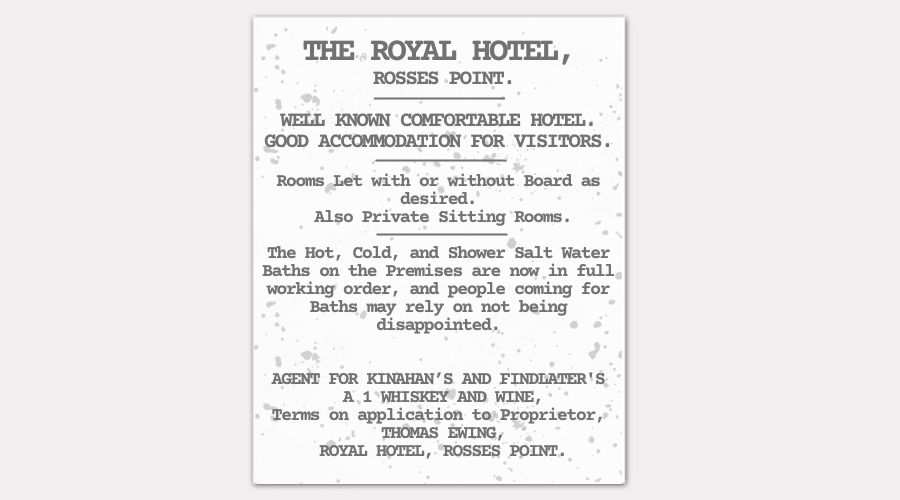
The following is a description of the clubhouse in 1896:
“I strayed into the Club house lately and found it a very compact, neat affair, where the comforts of the members are well looked after. On the ground floor are the reading-room and smoking-room, lavatories, etc. The two former are comfortably furnished. The rooms upstairs are principally reserved for the lady members, and in the lower storey the gentleman can stow away their clubs and lay by their paraphernalia when not in use. There is a fine kitchen with necessary cooking arrangements attached; a cellar containing whiskeys, wines, mineral wates, etc. Indeed throughout all the interior there was an air of comfort. There is a large yard, and stabling for several horses at the rear of the Club-house. We believe it is the intention of the Committee to improve the grounds attached to the house by converting a portion of the land into a neat flower garden.” (Sligo Champion, 8 Aug. 1896)

Some upgrades and a new clubhouse
In c.1906 a decision was made to extend the links to 18 holes. Extra land was leased and this time the course was laid out by Campbell’s brother, Captain Willie Campbell, another accomplished golfer. The newly designed course stretched along the sand dunes across Bomore but incorporated Combe’s original nine holes.

For nearly two decades, the Royal Hotel had been used by the club’s membership for dining and entertainment purposes. But the club had grown in popularity throughout the early decades of the 20th century and a large dedicated clubhouse was now required to meet the needs of the expanding membership.
In 1911 architect George O’Connor of Great Brunswick Street (now Pearse Street), Dublin, was contracted to design the new clubhouse building. He too enjoyed a relaxing round of golf. The builder was James Kiernan of North Richmond Street, Dublin, a leading advocate for the establishment of the Dublin Master Builders Association.
>>> YOU MIGHT ALSO LIKE: Could Church Island be Yeats’ treasured “Lake Isle of Innisfree”?
The single-storey clubhouse in Tudor Revival style was erected at an estimated cost of £2,000. The façade – with its long open veranda, distinctive timber strapwork and bargeboards, and stained glass windows displaying the club emblem – appears today much as it did when it was erected over a century ago. The appearance of the building expressed the affluence and exclusivity of its membership.

The following description of the extended golf links and new clubhouse at Rosses Point appeared in a travel guidebook produced by the Midland Great Western Railway in c.1914:
“SPLENDID GOLF COURSE. Among its many inducements to extended patronage is the fact that it possesses an improved eighteen-holes golf course, which is justly regarded as one of the finest in Ireland. The Club that maintains it has spared no pains to render this fine sea course as perfect as it is possible to make any links. Several new bunkers have been recently made; the course has been greatly improved, and is bound to increase every year in popularity. A new and commodious club house has lately been erected at considerable cost. The Golf Links Hotel is most pleasantly situated, and is under courteous and efficient management. In addition, there are several small, but acceptable places of accommodation in the village. One of the charms of Rosses Point is “grand golf at small expense” – visitors’ fees, Gentlemen 2s. per day, 10s. per week; Ladies 1s. 6d. per day, 7s. 6d. per week; Sunday play allowed with caddies. The Club is affiliated to the Golfing Union of Ireland … the visitor next becomes aware of the strength and invigorating freshness of the air, which is Rosses Point’s most favourable asset. So many seaside places become relaxing in Summer; but three rounds of 18 holes on the Co. Sligo course scarcely tire one, a fact due to the air and the very pleasant walking. A strong point of the Sligo Club is the very warm welcome extended to visitors, who need never be afraid of being left out in the cold, even if they do not know any resident.”
The rear and side elevations of the clubhouse have been extensively modified and extended over the years. The facilities were also upgraded in recent times and in 2005, the clubhouse was officially reopened by then Taoiseach Bertie Ahern. Today, this fine Edwardian building is listed in the Record of Protected Structures.
War times
During the First World War, many members of Sligo Golf Club joined the army. This resulted in the suspension of some club events. Notably, the club made substantial donations to the war effort through the Sligo Wounded Soldiers’ Fund, the Prince of Wales National Relief Fund and the Irish Counties War Hospital.

Throughout this turbulent time, the club’s three founding fathers were still deeply involved in local affairs. Sligo Corporation elections were held in January 1919, at the beginning of the War of Independence and were the first elections to use proportional representation in Ireland or Britain. Interestingly, James Campbell, Harper Campbell Perry and Arthur Jackson all ran as candidates on the Sligo Ratepayers’ Association ticket. Perry and Jackson both succeeded in getting elected, with the former topping the poll with 169 first preference votes and the latter winning a respectable 55 first preference votes. Campbell failed to get elected garnering only 30 first preference votes. Sligo Ratepayers’ Association and the independents had won 11 seats between them but were outnumbered by Sinn Féin and Labour, who won 13 seats.
In June 1920 Sligo Corporation declared its allegiance to Dáil Éireann following a vote by the councillors; neither Jackson nor Perry was present for the vote. But the corporation was slow to cut its ties completely with the British Local Government Board. At a meeting in January 1921, Perry put forward a motion seeking to present the corporation’s accounts to the British Local Government Board for audit. This was seen by the Sinn Féin councillors as conceding to British rule in Ireland and was deemed illegal in light of their declared support of the Dáil. Needless to say, Perry’s motion was not carried.
Sign up to our newsletter
Given their association with Ireland’s social and political elite, golf clubs faced a dangerous time during the War of Independence and Civil War. For a short period, County Sligo Golf Club was forced to close due to unrest. Some of the club’s members also come under attack. In August 1921, during the Truce, Campbell and Jackson each contributed £25 to the Sligo branch of the White Cross, which sought to help Volunteers and their families who were suffering due to their involvement in the War of Independence. This benevolence from the unionist community probably represents an attempt to avoid trouble with the local IRA. Despite his efforts, Jackson and his family were still targeted.
In October 1921 Sligo IRA reported to General Headquarters that they had three Sligo Protestants under close surveillance, whom they described as “unionists of the bitter type and men of considerable means”. Listed among them was Jackson. Previous to this, the Sligo Engineering Company’s premises owned by his son, Arthur Pollexfen Jackson, were targeted, when on 10 January 1920 a garage and cars were destroyed supposedly by Sinn Féin supporters. This is where the Bus Éireann garage is now located. Like his father, Arthur P. Jackson was captain of the golf club at Rosses Point in 1921, 1931 and 1937–38. A committee member also, he was made president of the club from 1935–38. Arthur P. Jackson presented the Jackson Cup to the club to express his gratitude for nominating him for vice-president of the Connacht Branch of the Golfing Union of Ireland on its formation; this matchplay competition was open to all members of affiliated clubs in Connacht.
At a meeting of Sligo Corporation, held to discuss the Treaty, both Jackson and Perry argued in its favour, though the latter still declared himself “a life-long unionist”. Meanwhile, Jackson tried to persuade his fellow councillors to “get rid of those wretched political and sectarian differences and to unite in advancing the prosperity of the country”. On 29 December 1921, the corporation passed a resolution in favour of ratifying the Treaty.

Despite the dangers they faced during the War of Independence and Civil War, the three founding fathers of County Sligo Golf Club continued to hold important positions in local society. They also expanded their milling businesses in Sligo throughout this period and into the 1940s. But, after emerging from wartimes, some changes were inevitable. This is reflected in developments within the golf club at Rosses Point which saw members of the Catholic business class join for the first time. The most influential club members throughout the 1920s and 1930s, however, remained Protestant.
Modernizing the golf course
The year 1923 saw Rosses Point host the inaugural West of Ireland Amateur Open Championship, still one of the most coveted titles on the amateur circuit. It was won by local man Larry Vernon, whose sister-in-law Amy Ormsby won the Irish Ladies Close Championship in 1909 and was a four-time winner of the Ladies South African Championship. Although “The West” proved a big success, many of the early competitors of this annual tournament felt that the Sligo links did not offer enough of a challenge.
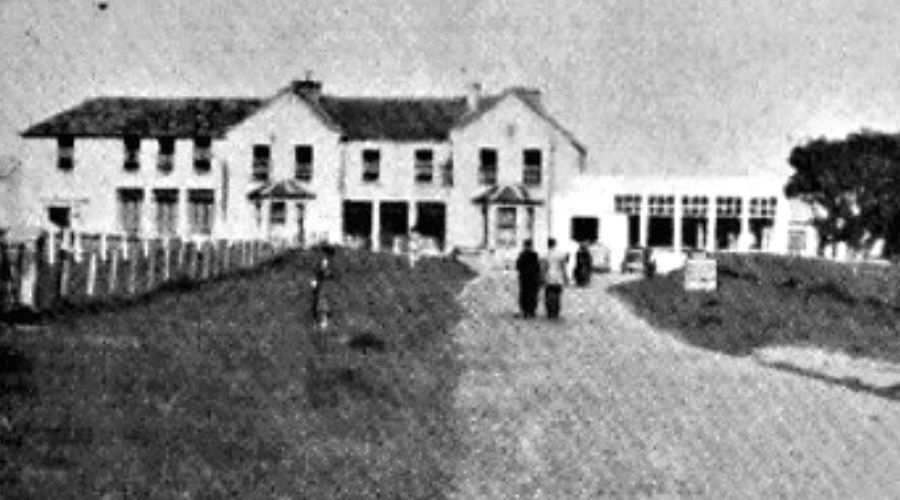
By the late 1920s, the game of golf had evolved and Sligo Golf Club needed to adapt. Not wanting to be left behind, the course at Rosses Point was set to be upgraded once more. World-famous English golf course architect Harry Shapland Colt, of Colt, Alison & Morrison Ltd, was commissioned to design the new course.
A D V E R T I S E M E N T
Colt began work in 1927, developing an anti-clockwise layout with new greens and tees. The newly designed course wasn’t completed until the summer of 1929. Colt’s course extended across the sand dunes and onto the cliffs overlooking the beaches, with elevated tees and streams adding to the challenge. Next, a bunkering plan was needed. On this occasion, Colt sent his assistant, Captain Hugh Alison, to undertake the work. Allison favoured deep bunkers with high ridge lines.
“Rosses Point … become on Mr. Harry Colt’s plan a greatly improved and less arduous course … The golfer will love Rosses Point with its comfortable clubhouse and the welcoming habits of the members … There is one capital hotel run by a keen golfer right on the course … For a golfing holiday Rosses Point is hard to beat. A party of four can have an ideal time there amid glorious surroundings and with good Atlantic air strengthening the lungs. The golf is of the real seaside type, and is most interesting and testing.” (Sligo Champion, 8 Jun. 1929)
Since its upgrades, County Sligo Golf Club has hosted all the major Irish championships, including the Irish Close Championship and the Irish Open Amateur Championship, as well as the Home Internationals. Some modifications have been made in more recent times, with new greens and bunkers added. It remains, however, one of Ireland’s greatest championship links.

County Sligo Golf Club has also produced some fine golfers, among the most notable are Amy Frances Vernon née Ormsby and Cecil Ewing. Most Irish professionals, and some internationals also, have enjoyed a round or two at Rosses Point.
Advertising Disclaimer: Irish Heritage News is an affiliate of FindMyPast – we earn commissions from qualifying purchases. This does not affect the amount you pay for your purchase.
READ NOW
➤ James B. Connolly: first modern Olympic champion and son of Irish emigrants
➤ From rackets to rugby: Dubliner Frank Stoker and his sporting triumphs
➤ The “Lady of the Lake”: Beezie and her island
➤ Cottage Island on Lough Gill: its history and archaeology
➤ Waterford jockey Joe Widger’s historic Grand National win at Aintree with Wild Man
Belfast Newsletter, 4 Feb. 1891.
County Sligo Golf Club Breaking Points, 5 Feb. 2020.
County Sligo Golf Club Breaking Points, 11 Apr. 2020. ‘Special Edition – “The West”’.
County Sligo Golf Club Breaking Points, 17 May 2020.
County Sligo Golf Club Breaking Points, 6 Nov. 2020.
County Sligo Golf Club. ‘History’.
[www.countysligogolfclub.ie
/aboutus/history/]
Deignan, P. 2008. ‘The Protestant community in Sligo, 1914-1949’. Unpublished PhD thesis Maynooth University.
Deignan, P. 2009. ‘PR & the Sligo borough election of 1919’. History Ireland 17(3).
Deignan, P. 2011. ‘The importance of fraternities and social clubs for the Protestant community in Sligo from 1914 to 1949’. In J. Kelly and R.V. Comerford (eds) Associational Culture in Ireland and Abroad. Irish Academic Press, pp.191-212.
Deignan, P. 2019/20. ‘Sligo Protestants and the Sligo borough election of January 1919’. The Corran Herald 52, pp.49-54.
Dictionary of Irish Architects, ‘Co. Sligo, Rosses Point, Golf Pavilion’.
[www.dia.ie/works
/view/12780/
CO.+SLIGO%2C
+ROSSES+POINT%2C
+GOLF+PAVILION]
Donegal Democrat, 9 Oct. 1926.
Farry, M. 2005 (1st publ. 1992). Sligo 1914-21: A chronicle of conflict. Trim.
Gilleece, D. 1994. Co. Sligo Golf Club: the first hundred years 1894-1994.
Keogh, M.F. c.1914. Sligo: Strand Hill, Rosses Point, Lough Gill. Midland Great Western Railway of Ireland.
Mulhall, D. 2006. ‘“A gift from Scotland”: golf’s early days in Ireland’. History Ireland 14(5).
National Inventory of Architectural Heritage, NIAH no. 32304008.
[www.buildingsofireland.ie
/buildings-search/building/
32304008/rosses-point
-golf-club-rosses-
upper-rosses-point-sligo]
Sligo Champion, 3 Jan. 1891; 16 Jan., 6 Feb. & 18 Jun. 1892; 14 Jul., 21 Jul., 20 Oct. & 29 Dec. 1894; 10 Aug., 12 Oct., 9 Nov. & 30 Nov. 1895; 2 Jul. 1898; 16 Jan. & 21 Aug. 1915; 16 Nov. 1918; 26 Aug. 1922; 12 Jan., 20 Sep., 27 Sep. 1924; 8 Jun. 1929; 15 Jul. 1950; 2 Jul. 1982; 20 Sep. 1991; 30 Dec. 1994; 9 Aug. 2006; 13 Jan. 2010.
Sligo County Development Plan Record of Protected Structures, RPS no. 69.
Western People, 1 Jul. 2008.



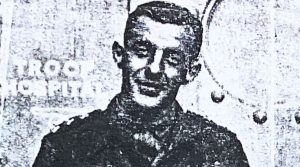



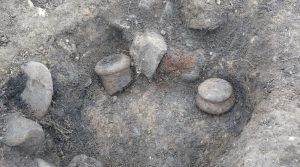





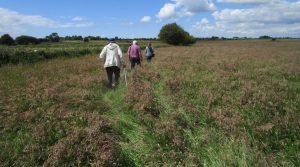
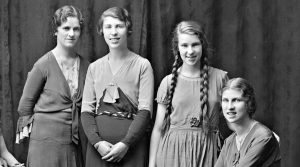
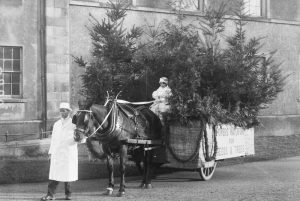

2 Responses
This article is very interesting! However I would like to make a correction regarding Amy Ormsby. She is reported here and elsewhere to have been married to Larry Vernon. In fact, she was married to Larry’s brother Arthur Eisdell Vernon. She and her husband later moved to South Africa, where she continued to golf and is in the Southern Africa Golf Hall of Fame as Mrs. A.E. Vernon.
Arthur Eisdell Vernon and Amy Frances Ormsby civil marriage record, 12 Jul 1911, irishgenealogy.ie
Transcription:
Location: Rosses Point Church, Sligo, Ireland
Groom: Arthur E. Vernon, Bank Official, Spencer Street, Castlebar. Father: William Thomas Vernon, Gentleman.
Bride: Amy Frances Ormsby, Rosses Point, Sligo. Father: John Robert Ormsby, Gentleman. Witnesses: Frances May Ormsby, Warren O. Vernon.
Thanks Helen for bringing this to our attention. We looked up her marriage record and agree with you (we have now edited the article). Thanks again!